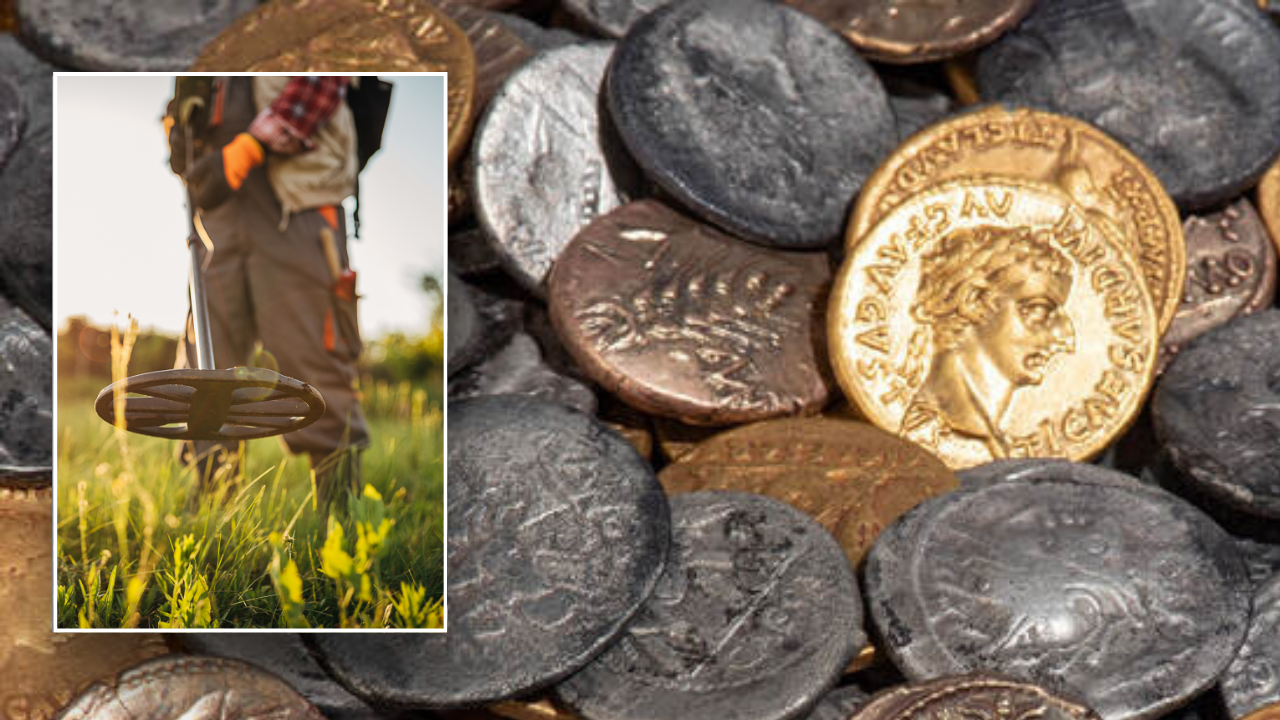Lifestyle
Metal detectorists discover hoard of priceless gold coins dating back to Biblical times

A Remarkable Discovery: Unearthing Ancient Coins in the Netherlands
Introduction to the Discovery
In a fascinating turn of events, two metal detector enthusiasts, Gert-Jan Messelaar and Reinier Koelink, stumbled upon an extraordinary archaeological treasure in the Netherlands. The discovery, announced by the Cultural Heritage Agency of the Netherlands (RCE) on January 27, revealed a cache of 404 coins dating back to Biblical times. This unique find is a blend of Roman and British coins, making it a standout discovery in the field of numismatics and history. The coins were uncovered in the autumn of 2023 in Bunnik, a town in the province of Utrecht, but their existence was only recently made public. This remarkable find has captivated historians and archaeologists, offering a glimpse into the ancient connections between the Roman Empire and the British Isles.
The Historical Context: Coins from Two Civilizations
The cache consists of two distinct groups of coins: 42 British coins, known as "staters," and 288 Roman coins. The British staters were minted between 5 B.C. and 43 A.D. and are made of gold, silver, and copper. These coins bear the name of Cunobeline, a prominent British king who ruled from 9 to 43 A.D. His reign is often associated with the Roman influence in Britain, making these coins particularly significant. The Roman coins, on the other hand, were minted between 200 B.C. and 47 A.D. Among these, 72 are gold coins, or "aurei," dating from 19 B.C. to 47 A.D. Interestingly, two of these gold coins were found with the same stamp and showed no signs of wear, indicating they were never circulated and were likely part of a freshly minted batch.
The Story Behind the Coins: Roman Soldiers and British Loot
Historians believe the coins were brought to Bunnik by Roman soldiers returning from Britain after the first Roman conquests. The Roman coins likely served as payment for the soldiers, while the British staters could have been war booty. This theory is supported by the fact that Roman troops began crossing the North Sea to conquer the Britannic Isles around the time these coins were minted. The discovery provides tangible evidence of the interactions between the Roman Empire and the British Isles, shedding light on a pivotal period in history.
The Significance of the Discovery: A Unique Find in Europe
This archaeological treasure is not only the largest of its kind found in Utrecht but also the only Roman-British coin hoard discovered on mainland Europe. Similar finds have been made in the United Kingdom, but this is the first of its kind in the Netherlands. The RCE highlighted that the coins were buried in the northern border region of the Roman Empire, known as the Lower Germanic Limes, which once ran through the Netherlands. This region played a crucial role in the Roman conquest of Britannia, and the discovery underscores its importance. The unique combination of Roman and British coins buried together offers historians a rare opportunity to study the economic and cultural ties between these ancient civilizations.
The Broader Impact: Insights into Ancient History
The discovery of these coins is more than just a fascinating find; it has significant implications for our understanding of ancient history. The Roman-British coin hoard provides valuable insights into the movement of goods, people, and ideas during the Roman Empire’s expansion. It also raises questions about the lives of the soldiers who brought these coins back to the Netherlands and the circumstances under which they were buried. For historians, this find is a treasure trove of information, helping to piece together the story of a region that played a pivotal role in shaping European history.
Conclusion: Preserving the Past for the Future
The discovery of these ancient coins is a testament to the enduring legacy of the Roman Empire and its far-reaching influence. It also highlights the importance of preserving cultural heritage for future generations. The RCE and other organizations play a vital role in safeguarding such finds, ensuring that they are studied, documented, and shared with the public. For metal detectorists like Gert-Jan Messelaar and Reinier Koelink, this discovery is a reminder of the thrill of the hunt and the potential for ordinary people to uncover extraordinary pieces of history. As researchers continue to analyze these coins, they will undoubtedly uncover even more secrets, offering a deeper understanding of a bygone era.
-

 Money3 days ago
Money3 days agoConsumer Financial Protection Bureau Adds Error Message To Home Page
-

 Australia20 hours ago
Australia20 hours agoTropical Cyclone Zelia intensifies to category 2 storm
-

 Asia21 hours ago
Asia21 hours agoWhat you need to know about 2024 YR4, the asteroid that could hit Earth in about eight years’ time
-

 Money2 days ago
Money2 days agoWinning Content Strategies For Wealth Managers
-

 Entertainment13 hours ago
Entertainment13 hours agoPrince Harry and Meghan Markle’s Best Moments and Photos From the 2025 Invictus Games
-

 Politics21 hours ago
Politics21 hours agoDozens of religious groups sue to stop Trump admin from arresting migrants in places of worship
-

 Entertainment3 days ago
Entertainment3 days agoEvery Celebrity Who Attended the 2025 Super Bowl: A Guide to the A-Listers at the Big Game
-

 Australia7 hours ago
Australia7 hours agoTropical Cyclone Zelia intensifies to category five system off Pilbara coast









